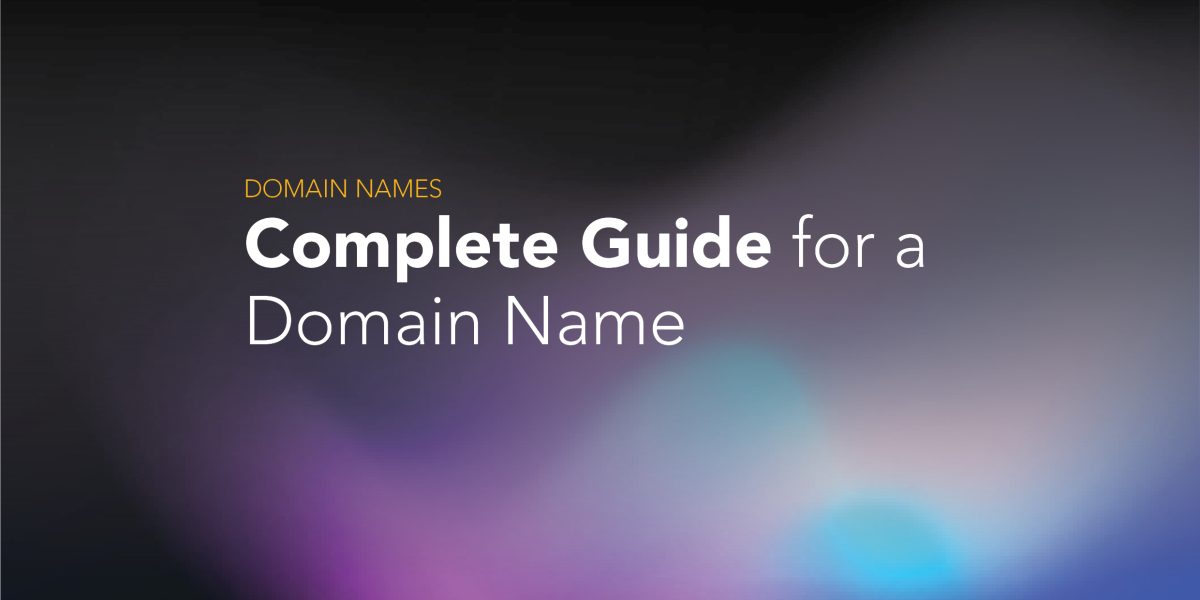Complete Guide for a domain name
- No Comments
Choosing and managing a domain name is a crucial step in establishing an online presence. Here’s a comprehensive guide for understanding and navigating the domain name process:
What is a Domain Name:
- A domain name is a human-readable web address that represents the numeric IP address of a specific location on the internet. It’s how people find your website.
Choosing a Domain Name:
- Relevance: Choose a name that reflects your brand, business, or content.
- Memorability: Opt for a name that is easy to remember.
- Simplicity: Keep it short, simple, and easy to spell.
- Avoid Numbers and Hyphens: Numbers and hyphens can be confusing when spoken and are often mistyped.
- Keyword Consideration: If possible, include relevant keywords that describe your content or business.
Domain Extensions (TLDs):
- Common TLDs: .com, .net, .org are widely recognized and commonly used.
- Industry-specific TLDs: Consider industry-specific extensions like .tech, .blog, or .store if relevant.
- Country Code TLDs: Use country-specific extensions like .us, .uk, etc., for local targeting.
Domain Registration:
- Choose a Registrar: Select a domain registrar (e.g., GoDaddy, Namecheap, or Google Domains).
- Check Availability: Use the registrar’s search tool to check if your desired domain name is available.
- Registration Process: Follow the registrar’s registration process, providing accurate contact information.
Domain Privacy Protection:
- Consider Privacy Protection: Domain privacy protection (or WHOIS privacy) keeps your personal information private in the domain registration database.
Renewal and Expiry:
- Set Reminders: Keep track of your domain’s expiration date and set reminders for renewal.
- Auto-Renewal: Enable auto-renewal to avoid accidental expiration and potential loss of the domain.
DNS Management:
- Domain Name System (DNS): DNS translates domain names into IP addresses. Familiarize yourself with basic DNS management.
- Nameservers: Set and manage your domain’s nameservers to control where the domain points.
SSL Certificate:
- Secure Your Domain: Consider getting an SSL certificate to secure your website with HTTPS. Many registrars offer free SSL options.
Subdomains:
- Understanding Subdomains: Learn about creating subdomains (e.g., blog.yourdomain.com) for different sections of your website.
Domain Transfer:
- Transferring Domains: Understand the process and requirements if you decide to transfer your domain to a different registrar.
Domain Branding:
- Consistent Branding: Ensure that your domain name aligns with your overall brand identity.
Legal Considerations:
- Trademark Checks: Before finalizing a domain, check for trademarks to avoid legal issues.
- Domain Disputes: Familiarize yourself with domain dispute resolution processes.
Domain Valuation:
- Valuation Tools: Explore domain valuation tools if you’re considering buying or selling a domain.
Domain Redirects:
- Redirects: Learn how to set up domain redirects if you have multiple domain variations pointing to the same website.
Domain Email:
- Professional Email: Consider setting up professional email addresses using your domain (e.g., info@yourdomain.com).
Regular Audits:
- Regular Checkups: Periodically review your domain settings, renewal status, and overall health.
Domain Hosting:
- Hosting Provider: Choose a reliable web hosting provider to host your website content associated with the domain.
Remember that your domain is a significant part of your online identity, so choose and manage it thoughtfully. Regularly update and review your domain settings to ensure a smooth online presence.


